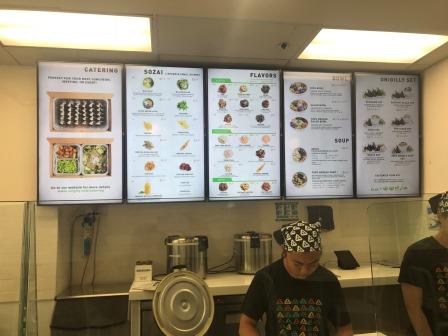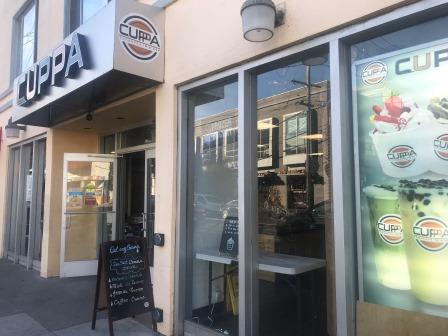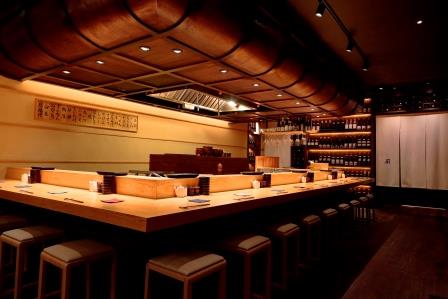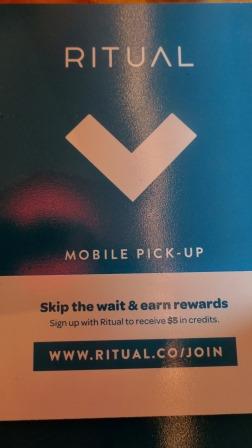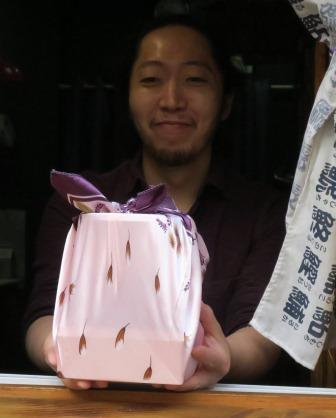The Onigiri boom arrives in the Bay Area of San Francisco!
By Elli Sekine
Data for Japan’s convenience stores say that 6 billion onigiris (rice balls) are sold each year. A major convenience store chain, Seven Eleven, for instance, sells about 4 million onigiris every day. The number of onigiris consumed every day should be enormous if you include sales at supermarkets and bento specialty establishments. A young group of people were making a plan to launch a franchise business in North America with onigiris, a Japanese daily food, in 2007.
I had been to one of their onigiri sampling events back then before this business started. In those days, onigiris were not sold anywhere except in a few Japanese markets. Sushi had already gained overwhelming popularity in the San Francisco area, and onigiris were also considered to be sushi. In other words, people used to think that rice + seaweed = sushi. In those days, most of them thought that it would be too difficult to market onigiris as a product, due to such poor recognition among the people. However, the three entrepreneurs made a passionate presentation at La Cocina, the organization to support immigrant women’s food businesses in San Francisco, despite the gender gap being men, and seized the opportunity to be supported by them. They launched “Onigilly”, operated in outdoor tents for a while, and then opened an independent store. They are on the right track, successfully increasing the number of the establishments, and heading towards a typical success story.
Currently, in San Francisco, the onigiri boom has arrived. In San Francisco, where commodity prices are going up all the time, onigiris are a good value. They are inexpensive, healthy, and delicious. People rush to buy them in large numbers.
The demand for them is expanding, and not just sold at onigiri shops now. They are now also delivered to IT industry lunches as catering, as boxed lunches for meetings, Uber Eats, etc. Unlike sushi, onigiris are easier to handle because they are not raw. The recipes are simple, and anybody can make them. Each piece is completed, so the quantity can be easily calculated by the number of pieces. For busy one-handed eaters of today, onigiris help them save eating time, and health-conscious people look to them as a superfood for gluten-free or vegan diets.
Presently, there are 5 “Onigilly” restaurants. It has been 6 years since the first opening, and the menu has been evolved yearly. They have expanded the variety, and depending on the size of each restaurant, they are offering other things besides onigiris such as rice bowls which you can add toppings of your choice, zousui (rice porridge), a noodle soup, a tofu noodle salad, etc. The onigiri boom has already spread to NY, LA, etc., and onigiri menus are diversified from high-end to fast-food. Zousui and chazuke are appearing on menus as well.
“Samovar”, a health-conscious restaurant + café in San Francisco, which took the world by storm 10 years ago, opened another restaurant at SFO (San Francisco Airport), which is known as the most gourmet airport, last year.
There are currently 5 “Samovar”s in the Bay Area, and each of them offers slightly different designs and menus. Their SFO location is run by a different team of people than its founders. The “Operator Tastes on the Fly” has invested an enormous capital of $4.1 billion to run the SFO location. They operate as a tea café of San Francisco, at New York, Denver airports, and neighboring high-end hotels, where other local popular restaurants have been selected also.
“Samovar Tea Lounge SFO” ‘s sophisticated exterior and interior are extraordinary. A high-class tea bar, a full bar, and a dining space are set up, and all the menu items are healthy. You can enjoy your meal in a big oasis-like space in the airport. Its rice menu contains smoked duck porridge ($14.5), hojicha ochazuke ($14.50), and salmon egg bowl ($14.50), and you can also add a half-boiled egg or a soup on the side. It is a precious airport gourmet place where you can have a comforting meal before your departure, or upon your arrival.
Mr. Koji Kanematsu, the founder of “Onigilly” has said at the first year, “I want to aim for an onigiri chain that will expand to 500 locations nationwide.” People who were there were laughing at him behind his back then, but this big dream of his does not seem impossible now. The “Onigilly” chain is surely increasing the number of its restaurants, and onigiris are appearing more and more on the menus of many restaurants and fast-food establishments. Nobody calls onigiris sushi anymore. It does not seem long before this dream of the team of Japanese entrepreneurs who have been running towards it the last 10 years, will be realized.
サンフランシスコ・ベイエリアにおにぎりブーム到来!
日本のコンビニエンスストアではオニギリは年間60 億個売れているというデータがある。大手コンビニのセブンイレブンをとっても1 日に約400 万個という消費量だ。これにスーパーやお弁当屋などを入れると驚異的な数字になるだろう。
そんな日本の日常食、おにぎりのチェーン店を北米で展開しようと若いグループが2007 年に起業を構想していた。筆者は当時起業する前のおにぎり試食会に出かけている。当時、寿司が圧倒的な人気を得ていたサンフランシスコでは出回っていなかった。寿司が圧倒的な人気を得ていたサンフランシスコでは、おにぎりも寿司と呼ばれていた。要するにご飯+海苔=寿司という認識だった。
そんな中、おにぎりを商品化するのは厳しいのではないかという意見がほとんどだった。しかし3 人の起業家たちは、サンフランシスコで移民女性達のフードビジネスを支援するLa Cocina で男性でありながら、熱いプレゼンをし、ビジネス支援のチャンスを掴みとった。その後「Onigilly」を起業、テント販売を経て独立店舗をオープン、店舗数を増やすといったサクセスストーリーのレールに乗っている。
今、サンフランシスコでおにぎりブームが到来している。物価が高騰するサンフランシスコで、おにぎりの価値は、安くて健康的、しかも美味しいという理由で消費者が急増している。おにぎりカフェ(店頭)だけではなく、需要が広がっているのは、IT企業へのランチケータリング、そして会議のお弁当、ウーバーイートなどのデリバリーなど。おにぎりは寿司と違い、生では無いので扱いやすい、シンプルなレシピで誰でも扱える。
また、ひとつづつ完結しているので、量はその個数で計算される。何と言っても忙しい「ワンハンド」イーターにとっては食事の時短ができ、健康志向者にとってはグルテンフリー、ベーガンダイエットにも適用されるスーパーフードとしても着目されている。
現在、「Onigilly」は、ベイエリアに5店舗を構える。最初の店舗オープンから6 年経ち、メニューも年々進化している。最近ではオニギリに加えて、好きなものをトッピングに加えていくライスボール(Rice Bowl)、雑炊、ヌードルスープ、豆腐ヌードルサラダなど、店舗の広さによりメニューは異なるが、バラエティーに富んだ内容だ。おにぎりブームはすでにNY、LAなどにも広がり、おにぎりメニューは日本食レストラン以外のハイエンドからファーストフードまで多様化し、メニューも雑炊(粥)や茶漬けなどがメニューに登場し始めている。
サンフランシスコのティーカフェで10 年前に一世風靡したヘルシー系レストラン+カフェの「Samovar」は去年、全米で最もグルメなエアポートと言われるSFO(サンフランシスコ空港)にオープンした。「Samovar」は現在ベイエリアに5店舗を構えるが、店舗によりデザインやメニューが多少異なる。SFO店は創業者とは別チームで、Operator Tastes on the Fly が$4.1 ビリオンという巨額資金を投じてオペレーションを行い、サンフランシスコからニューヨーク、デンバー空港、隣接するハイエンドホテルのティーカフェとして参入する。いずれも地元の人気店が選ばれている。
「Samovar Tea Lounge SFO」は、洗練された外観、インテリアは異彩を放っている。高級なティーバー、フルバー、ダイニングが設置され、食事メニューは全て健康食。空港のオアシスとも言うべき広々としたスペースでは落ち着いて食事ができる。ご飯メニューには、スモークダック($14.50)のお粥、焙じ茶のお茶漬け($14.50)、サーモンエッグボウル($14.50)がベースで、オプションで半熟卵やスープをサイドでつけることもできる。出国、帰国の際に癒しの食事ができる貴重なエアポートグルメだ。
「Onigilly」の創業者、金松こうじ氏は起業元年に「全米500 店舗を展開するおにぎりチェーン店を目指したい」と語った。同席していたものは鼻で笑っていたが、その夢は満更でもない。「Onigilly」は確実に店舗数を増やし、オニギリメニューは多くのレストランからファーストフード店まで拡散している。今やオニギリを寿司と呼ぶ人はいなくなった。
カート一つから夢を実現させようとこの10 年走り続けた日本人起業家達の夢が叶う日もそう遠くなさそうだ。
Onigilly (Newly opend)
164 University Ave.
Palo Alto, CA 94301
(650) 313-2104
http://www.onigilly.com/
Mon.-Sun. 11:00am-9:00pm
Samovar Tea Lounge(Newly opend)
International Terminal A
San Francisco
(650) 821-8949
https://www.samovartea.com
7:00am-8:00 pm
Data for Japan’s convenience stores say that 6 billion onigiris (rice balls) are sold each year. A major convenience store chain, Seven Eleven, for instance, sells about 4 million onigiris every day. The number of onigiris consumed every day should be enormous if you include sales at supermarkets and bento specialty establishments. A young group of people were making a plan to launch a franchise business in North America with onigiris, a Japanese daily food, in 2007.
I had been to one of their onigiri sampling events back then before this business started. In those days, onigiris were not sold anywhere except in a few Japanese markets. Sushi had already gained overwhelming popularity in the San Francisco area, and onigiris were also considered to be sushi. In other words, people used to think that rice + seaweed = sushi. In those days, most of them thought that it would be too difficult to market onigiris as a product, due to such poor recognition among the people. However, the three entrepreneurs made a passionate presentation at La Cocina, the organization to support immigrant women’s food businesses in San Francisco, despite the gender gap being men, and seized the opportunity to be supported by them. They launched “Onigilly”, operated in outdoor tents for a while, and then opened an independent store. They are on the right track, successfully increasing the number of the establishments, and heading towards a typical success story.
Currently, in San Francisco, the onigiri boom has arrived. In San Francisco, where commodity prices are going up all the time, onigiris are a good value. They are inexpensive, healthy, and delicious. People rush to buy them in large numbers.
The demand for them is expanding, and not just sold at onigiri shops now. They are now also delivered to IT industry lunches as catering, as boxed lunches for meetings, Uber Eats, etc. Unlike sushi, onigiris are easier to handle because they are not raw. The recipes are simple, and anybody can make them. Each piece is completed, so the quantity can be easily calculated by the number of pieces. For busy one-handed eaters of today, onigiris help them save eating time, and health-conscious people look to them as a superfood for gluten-free or vegan diets.
Presently, there are 5 “Onigilly” restaurants. It has been 6 years since the first opening, and the menu has been evolved yearly. They have expanded the variety, and depending on the size of each restaurant, they are offering other things besides onigiris such as rice bowls which you can add toppings of your choice, zousui (rice porridge), a noodle soup, a tofu noodle salad, etc. The onigiri boom has already spread to NY, LA, etc., and onigiri menus are diversified from high-end to fast-food. Zousui and chazuke are appearing on menus as well.
“Samovar”, a health-conscious restaurant + café in San Francisco, which took the world by storm 10 years ago, opened another restaurant at SFO (San Francisco Airport), which is known as the most gourmet airport, last year.
There are currently 5 “Samovar”s in the Bay Area, and each of them offers slightly different designs and menus. Their SFO location is run by a different team of people than its founders. The “Operator Tastes on the Fly” has invested an enormous capital of $4.1 billion to run the SFO location. They operate as a tea café of San Francisco, at New York, Denver airports, and neighboring high-end hotels, where other local popular restaurants have been selected also.
“Samovar Tea Lounge SFO” ‘s sophisticated exterior and interior are extraordinary. A high-class tea bar, a full bar, and a dining space are set up, and all the menu items are healthy. You can enjoy your meal in a big oasis-like space in the airport. Its rice menu contains smoked duck porridge ($14.5), hojicha ochazuke ($14.50), and salmon egg bowl ($14.50), and you can also add a half-boiled egg or a soup on the side. It is a precious airport gourmet place where you can have a comforting meal before your departure, or upon your arrival.
Mr. Koji Kanematsu, the founder of “Onigilly” has said at the first year, “I want to aim for an onigiri chain that will expand to 500 locations nationwide.” People who were there were laughing at him behind his back then, but this big dream of his does not seem impossible now. The “Onigilly” chain is surely increasing the number of its restaurants, and onigiris are appearing more and more on the menus of many restaurants and fast-food establishments. Nobody calls onigiris sushi anymore. It does not seem long before this dream of the team of Japanese entrepreneurs who have been running towards it the last 10 years, will be realized.
サンフランシスコ・ベイエリアにおにぎりブーム到来!
日本のコンビニエンスストアではオニギリは年間60 億個売れているというデータがある。大手コンビニのセブンイレブンをとっても1 日に約400 万個という消費量だ。これにスーパーやお弁当屋などを入れると驚異的な数字になるだろう。
そんな日本の日常食、おにぎりのチェーン店を北米で展開しようと若いグループが2007 年に起業を構想していた。筆者は当時起業する前のおにぎり試食会に出かけている。当時、寿司が圧倒的な人気を得ていたサンフランシスコでは出回っていなかった。寿司が圧倒的な人気を得ていたサンフランシスコでは、おにぎりも寿司と呼ばれていた。要するにご飯+海苔=寿司という認識だった。
そんな中、おにぎりを商品化するのは厳しいのではないかという意見がほとんどだった。しかし3 人の起業家たちは、サンフランシスコで移民女性達のフードビジネスを支援するLa Cocina で男性でありながら、熱いプレゼンをし、ビジネス支援のチャンスを掴みとった。その後「Onigilly」を起業、テント販売を経て独立店舗をオープン、店舗数を増やすといったサクセスストーリーのレールに乗っている。
今、サンフランシスコでおにぎりブームが到来している。物価が高騰するサンフランシスコで、おにぎりの価値は、安くて健康的、しかも美味しいという理由で消費者が急増している。おにぎりカフェ(店頭)だけではなく、需要が広がっているのは、IT企業へのランチケータリング、そして会議のお弁当、ウーバーイートなどのデリバリーなど。おにぎりは寿司と違い、生では無いので扱いやすい、シンプルなレシピで誰でも扱える。
また、ひとつづつ完結しているので、量はその個数で計算される。何と言っても忙しい「ワンハンド」イーターにとっては食事の時短ができ、健康志向者にとってはグルテンフリー、ベーガンダイエットにも適用されるスーパーフードとしても着目されている。
現在、「Onigilly」は、ベイエリアに5店舗を構える。最初の店舗オープンから6 年経ち、メニューも年々進化している。最近ではオニギリに加えて、好きなものをトッピングに加えていくライスボール(Rice Bowl)、雑炊、ヌードルスープ、豆腐ヌードルサラダなど、店舗の広さによりメニューは異なるが、バラエティーに富んだ内容だ。おにぎりブームはすでにNY、LAなどにも広がり、おにぎりメニューは日本食レストラン以外のハイエンドからファーストフードまで多様化し、メニューも雑炊(粥)や茶漬けなどがメニューに登場し始めている。
サンフランシスコのティーカフェで10 年前に一世風靡したヘルシー系レストラン+カフェの「Samovar」は去年、全米で最もグルメなエアポートと言われるSFO(サンフランシスコ空港)にオープンした。「Samovar」は現在ベイエリアに5店舗を構えるが、店舗によりデザインやメニューが多少異なる。SFO店は創業者とは別チームで、Operator Tastes on the Fly が$4.1 ビリオンという巨額資金を投じてオペレーションを行い、サンフランシスコからニューヨーク、デンバー空港、隣接するハイエンドホテルのティーカフェとして参入する。いずれも地元の人気店が選ばれている。
「Samovar Tea Lounge SFO」は、洗練された外観、インテリアは異彩を放っている。高級なティーバー、フルバー、ダイニングが設置され、食事メニューは全て健康食。空港のオアシスとも言うべき広々としたスペースでは落ち着いて食事ができる。ご飯メニューには、スモークダック($14.50)のお粥、焙じ茶のお茶漬け($14.50)、サーモンエッグボウル($14.50)がベースで、オプションで半熟卵やスープをサイドでつけることもできる。出国、帰国の際に癒しの食事ができる貴重なエアポートグルメだ。
「Onigilly」の創業者、金松こうじ氏は起業元年に「全米500 店舗を展開するおにぎりチェーン店を目指したい」と語った。同席していたものは鼻で笑っていたが、その夢は満更でもない。「Onigilly」は確実に店舗数を増やし、オニギリメニューは多くのレストランからファーストフード店まで拡散している。今やオニギリを寿司と呼ぶ人はいなくなった。
カート一つから夢を実現させようとこの10 年走り続けた日本人起業家達の夢が叶う日もそう遠くなさそうだ。
Onigilly (Newly opend)
164 University Ave.
Palo Alto, CA 94301
(650) 313-2104
http://www.onigilly.com/
Mon.-Sun. 11:00am-9:00pm
Samovar Tea Lounge(Newly opend)
International Terminal A
San Francisco
(650) 821-8949
https://www.samovartea.com
7:00am-8:00 pm









